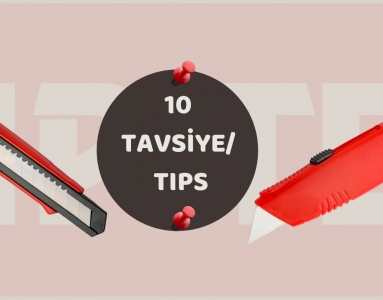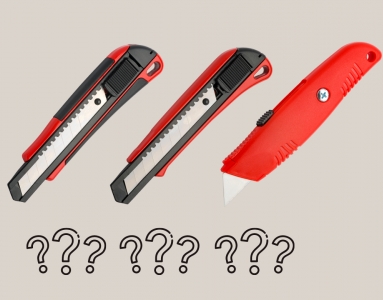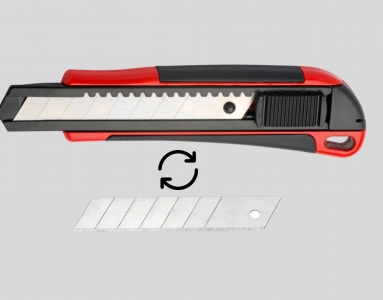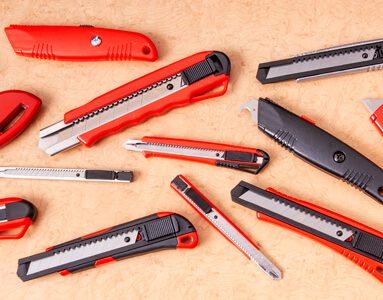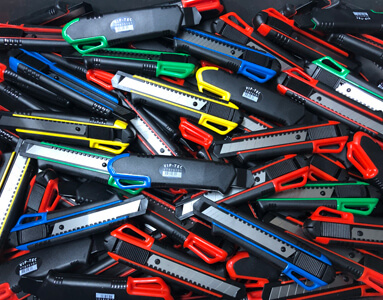Improper Use Of Utility Knife And How to Use It Properly
Utility Knife is one of the hand tools that is designed to cut different materials. With the proper use of a utility knife, you can easily cut different materials. On the other hand, if you improperly use a utility knife, it may cause injuries and accidents in the workplace. In this article, we will mention the improper use of Utility Knife and some safety tips for your reference.
Improper Use Of Utility Knife
1) Instead of drawing the Utility Knife away from your body drawing it toward your body. It is more likely to get injured if you draw the utility knife towards yourself
2) Keep working with a dull blade. Dull blades always require much more effort and pressure and this extra pressure may cause unintended injuries.
3) Trying to perform heavy cutting works that exceed the capacity of the utility knife. If you use a small utility knife for heavy-duty cutting works it may get broken or leads to accidents in the workplace.
4) Storing utility knife blade in extended mode. If you store your utility knife with the extended blade when the blade is not in use, the extended blade may cause injuries.
5) Not wearing personal protective equipment. Personal protective equipment is important to keep yourself safe in the workplace. If you don’t use cut-resistance gloves and safety goggles it will be more likely to get injured.
6) Not inspecting Utility Knife before use. If you neglect to inspect a utility knife before use you may not realize the broken parts or dull blades.
7) Neglecting to control cutting surface before you perform cutting work. An unstable slippery cutting surface, cutting surface, or any material on the cutting surface may cause an accident in the workplace.
8) Using a utility knife for an improper purpose. If you use Utility Knife as a scraper or screwdriver you may harm yourself
Some Safety Tips to Use Utility Knife in Proper Way
1) Make sure that the utility knife blade is sharp enough. The sharp blade is always safer than the dull and deformed blade. It will also be easier to perform cutting work with a sharp blade.
2) Use cut-resistance gloves. It will protect your hands in case of an accident
3) Use a safety utility knife for risk cutting works. Safety utility knives have an auto-retracting mechanism that retracts the blade into the handle as soon as you remove your finger from the blade slider.
4) Make sure that the blade stored in the blade channel properly
5) Keep your hands and arms away from the cutting line.
6) Do not apply too much pressure to Utility Knife
7) Follow the manufacturer company’s instruction once you replace the utility knife blade or snap off the blade edge.
8) Dispose of dull blades and broken blade edges in the puncture-resistant container.
9) Use safety goggles to protect your eyes from broken blade edges.


